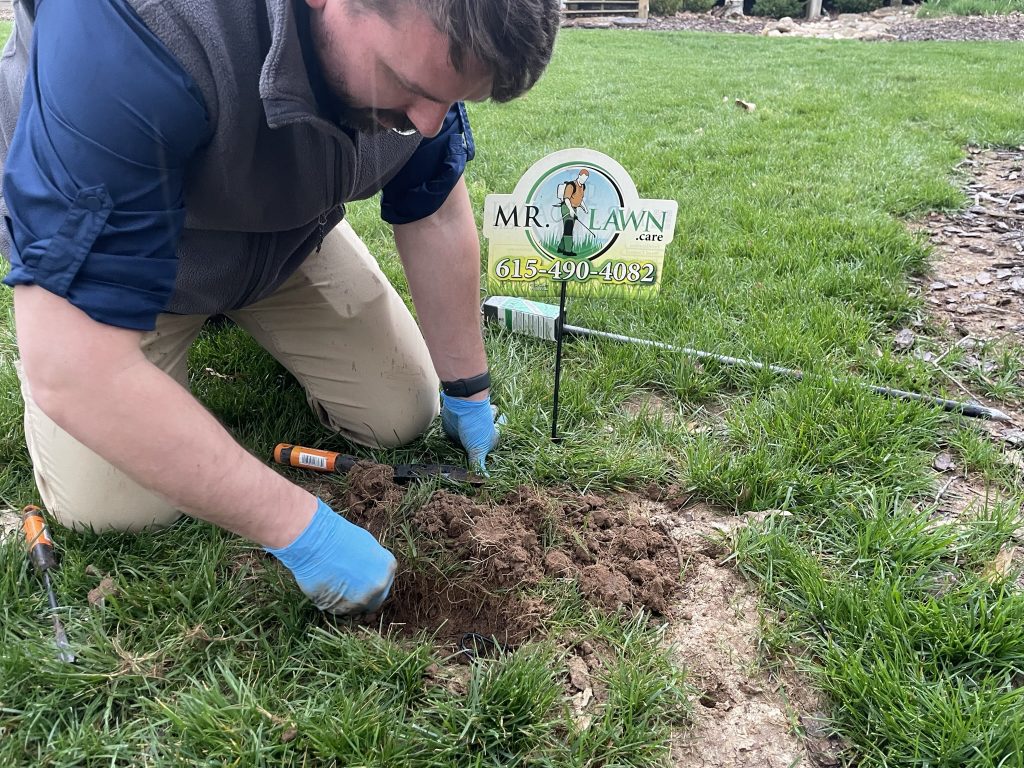The Methodology


There are many ways to interpret data. I feel it’s best to be transparent with you so that you know exactly what your money is being used for.
The first step is understanding what I do is to get a grasp of the basics. You have a plant, your grass, growing in the soil. This plant goes through cycles during the spring and the fall when the soil temperatures hit 55. This enables the plant to uptake nutrients from the soil rapidly and produce vigorous root and shoot growth. Whenever the plant reaches these cycles the plant needs to have the minimum of each of the nutrients it requires to maintain plant health.
Shoots grow above the soil, are used by the plant to produce carbohydrates via photosynthesis and to produce seeds. Roots are used by the plant to extract water and nutrients from the soil, they are also used as a storage bank for carbohydrates. Whenever you remove too much of the plants shoots this causes a lot of stress to the plant. This causes a stress response. The most common stress response in plants is to absorb the bottom 1/3rd of their root system and convert them to carbohydrates. This reduces its ability to absorb nutrients and water, but allows it to regrow its shoots quickly to produce more carbohydrates.
Having deficiencies in the soil causes similar stress reactions in the plant, typically stunting shoot or root growth or cell vigor. These symptoms can be subtle but all contribute to reduced vigor in drought or other stressful conditions. Testing for soil allows us to see the nutrients available to the plant.
All of my soil tests are done using a Maelich 3 acid extraction at Waypoint Analytcial. To interpret the data I use MLSN. MLSN is an initialism for minimum levels for sustainable nutrition. This is a method for soil test interpretation and fertilizer recommendations. It works by ensuring the grass is supplied with all the nutrients it can use while keeping a safe amount of each nutrient untouched in the soil as a reserve. The MLSN calculation identifies the amount of nutrients the grass uses at a particular site. It then ensures the grass is either supplied with 100% of those nutrients from fertilizer, from soil, or from a combination of soil and fertilizer.
This approach recognizes that grass uses nutrients. Rather than trying to maintain all the nutrients the grass could ever use, and then some, in a hypothetical optimum soil that doesn’t exist, the MLSN approach makes a careful estimate of plant use and makes sure the grass is supplied with that much while still keeping a safe amount in reserve, untouched, in the soil. Once I’ve got your soils needs mapped out I can fine tune your treatments to meet those requirements. Examples:
- ammonium sulphate, if your low in sulfur, high in calcium. This supplies nitrogen and sulphur
- potassium nitrate if your low in potassium. This supplies nitrogen and potassium
- gypsum if your low in calcium, and sulphur without raising ph
- If your high in phosphorus you’ll become deficient in iron and manganese during vigorous growth stages so I can apply chelated manganese and iron to offset this.
DIY Soil Test Instructions
The cost of the soil test is $60. This is for me to drive out, take the samples, fill out the paperwork and mail them off. If you have some free time and want to save some $$ then please follow these instructions carefully.
- Using a clean, yes I want you to clean it, stainless steel or chrome plated shovel or spade
- dig 6 small cone or wedge-shaped holes in a zigzag pattern, 4”-5” in depth, throughout your lawn.
- Gather ⅓ cup of soil from the bottom of your cone or wedge and place it in a clean bucket, yes I want you to clean your bucket. This soil needs to be free of plant tissue.
- Mix the soil together and place 1 ½ level cups of mixed soil into a ziplock bag.
- Deliver this bag to your local farmers co-op for testing. You’ll have to fill out a form please select test S3M and put a check in the column for “Texture”. Most of you have Fescue, please input “563” in the crop code column. If you have Bermuda, input “524”, if Zoysia “583”. Please be sure to write your email clearly. You’ll need to email the results to me at AJ@MrLawn.Care To reduce variability in the data, I cannot accept old soil tests or tests from any lab other than Waypoint Analytical.
For lawn care services services, call 615-490-4082 today!
WHAT OUR CUSTOMERS HAVE TO SAY


5.0 Star Rating ★★★★★
56+ Reviews


5.0 Star Rating ★★★★★
4+ Reviews


